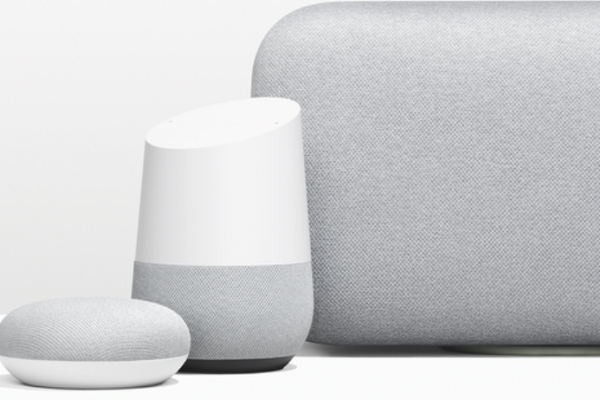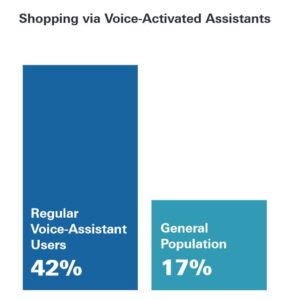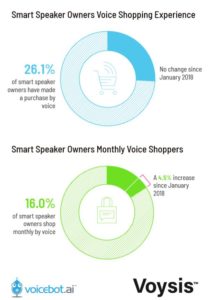New Survey Finds Rising Trend in Voice Shopping

The core of voice assistant users who engage in voice shopping is still relatively small, but poised for growth, according to a recent survey by Philadelphia-based digital commerce consulting firm SUMO Heavy Industries. The crucial factor in the voice commerce space is simply a matter of adoption of voice assistant technology. That aligns with recent surveys by Voicebot as well. Though the exact methodologies and questions aren’t identical, the trend of growing voice assistant use leading to more voice shopping is easy to see.
Commerce Commands
 SUMO published their findings based on answers from 1,046 consumers in the U.S. in The Current State and Future of Voice-Assisted Shopping, part of its 2019 Voice Commerce Survey. Almost half of the respondents had never used a voice assistant at all, shrinking the percentage of people consumers who have used them for shopping to about 1-in-5. But, that percentage more than doubles when the question is restricted to frequent voice assistant users. In other words, whether people will shop by voice depends on the adoption of voice assistants in general. As people get used to using voice assistants for answering questions, sending messages, and other tasks, shopping will naturally find its way onto the list of tasks.
SUMO published their findings based on answers from 1,046 consumers in the U.S. in The Current State and Future of Voice-Assisted Shopping, part of its 2019 Voice Commerce Survey. Almost half of the respondents had never used a voice assistant at all, shrinking the percentage of people consumers who have used them for shopping to about 1-in-5. But, that percentage more than doubles when the question is restricted to frequent voice assistant users. In other words, whether people will shop by voice depends on the adoption of voice assistants in general. As people get used to using voice assistants for answering questions, sending messages, and other tasks, shopping will naturally find its way onto the list of tasks.
Voicebot’s Shopping Consumer Adoption Report also found approximately a fifth of consumers had tried shopping by voice. The conclusion of both surveys points to a clear connection between owning or regularly using a smart speaker and buying things with a voice assistant.
Smart Speaker Owners Most Likely to be Voice Shoppers
According to the survey, owning a smart speaker is a major contributor to the decision to shop by voice. While only 35 percent of the respondents in the Sumo study reported owning a smart speaker of some kind, almost all of them use a voice assistant with some regularity, including for shopping. In addition, 2-in-5 smart speaker owners use the devices to search for products even if they conclude the transactions through another channel.
This is important because smart speaker ownership is rising quickly. Voicebot’s research showed a 40.2 percent rise in smart speaker ownership in the U.S. 2018, to 66.4 million households. With more and cheaper smart speakers spreading, the expansion of voice shopping looks very likely.
Smart Speaker Grocery Shopping
 What people actually want to buy when they use their voice assistants is fairly diverse. SUMO found that respondents were interested in buying a mix of goods, with consumables topping the list. In Voicebot’s own survey, food was also a popular choice for voice commerce, although household goods took the top spot.
What people actually want to buy when they use their voice assistants is fairly diverse. SUMO found that respondents were interested in buying a mix of goods, with consumables topping the list. In Voicebot’s own survey, food was also a popular choice for voice commerce, although household goods took the top spot.
The question for companies and brands is not whether voice shopping will become an important element of their sales, but how best to connect with voice shoppers. SUMO found about half of their respondents prefer to connect with a voice assistant using their smartphones, but that could shift as smart speakers become more prevalent. The correlation between owning a smart speaker and shopping by voice matters a lot in this context.
Companies selling products by voice will gravitate toward whatever smart speakers and the associated voice assistant will get them to the most customers. The details of sales and logistics are still evolving, but the data points to voice shopping as a big shift in digital commerce.
Follow @voicebotai Follow @erichschwartz








